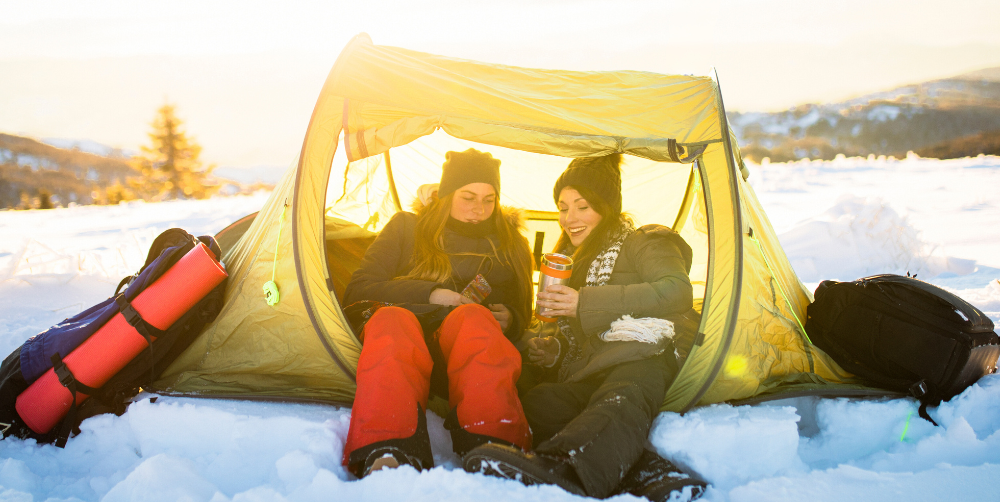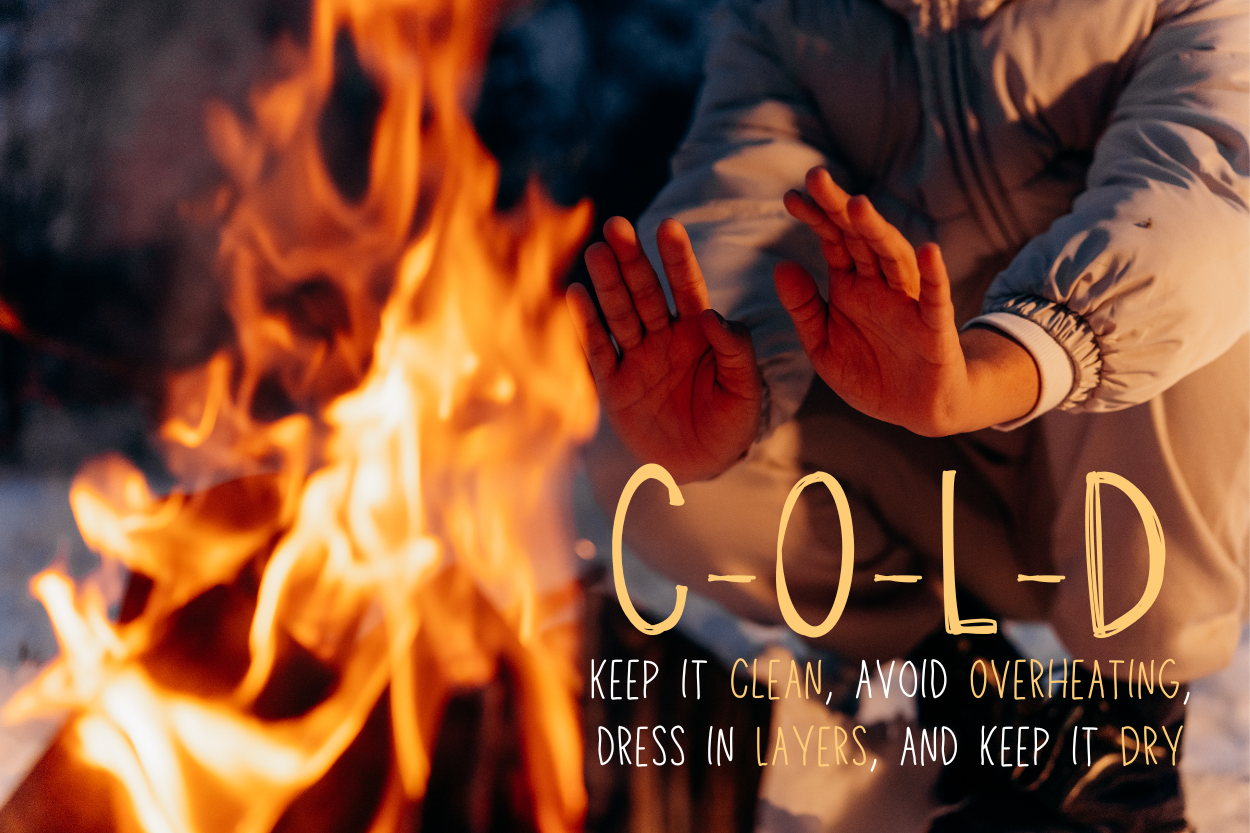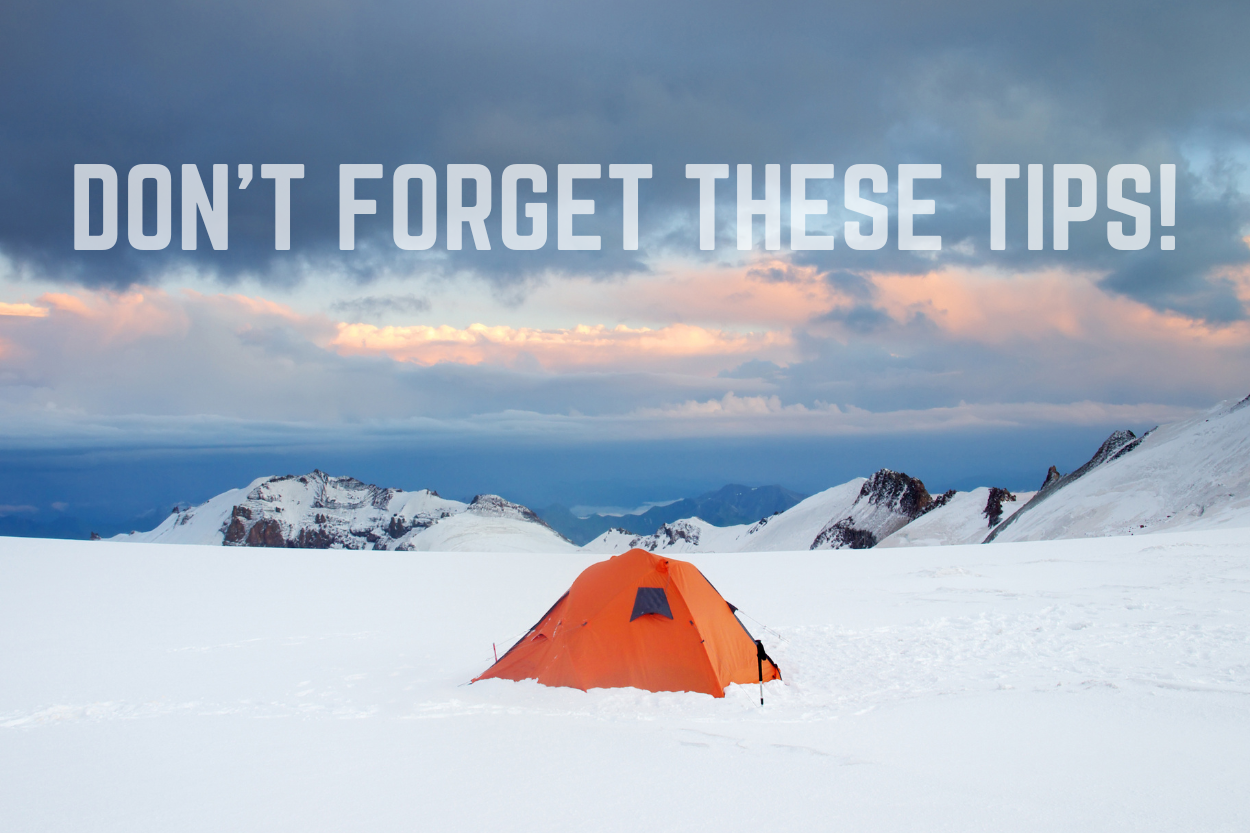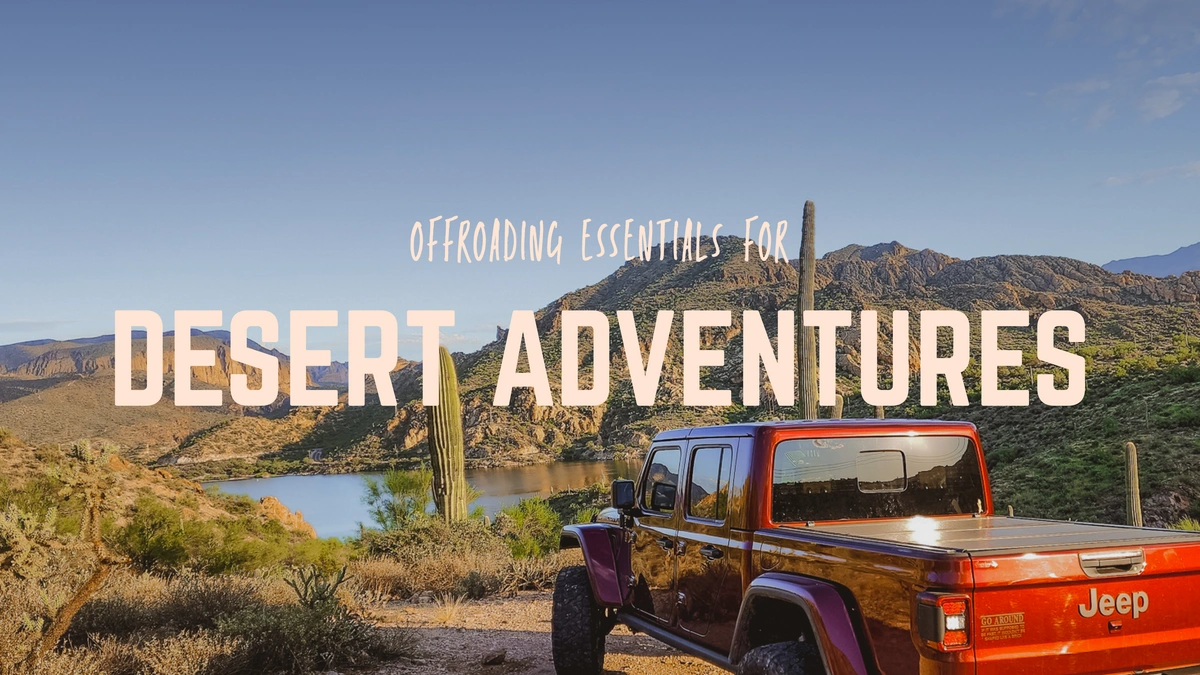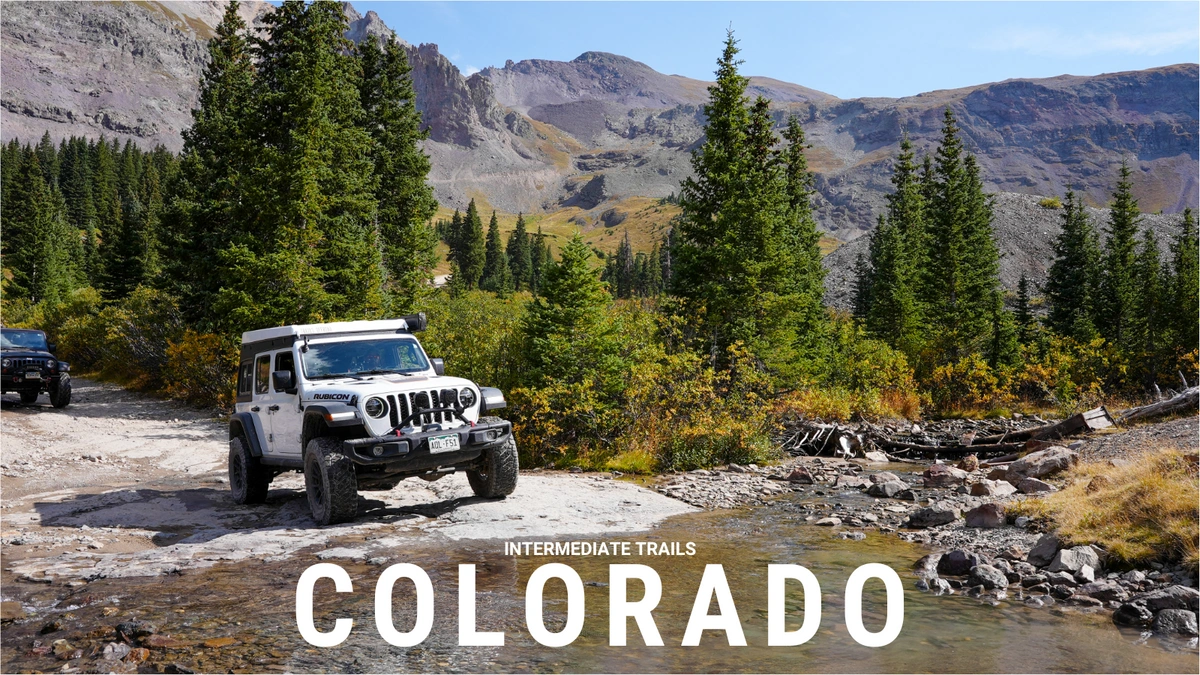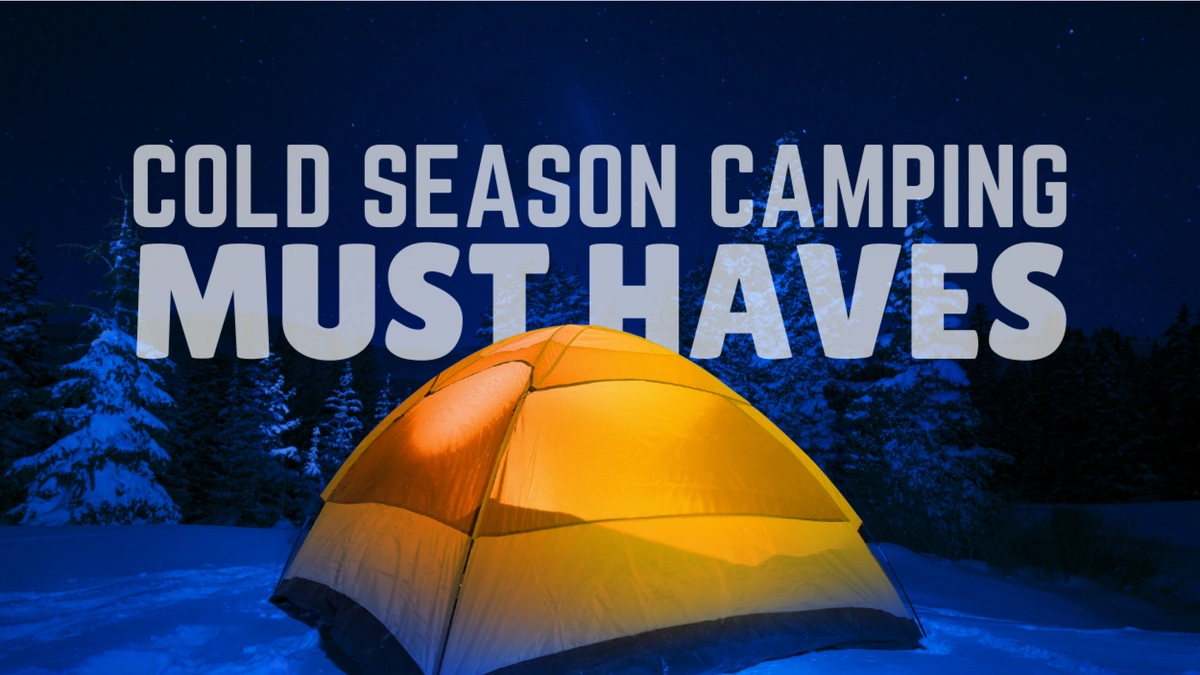
Cold Season Camping Must-Haves
When the temperature drops and snow blankets the trails, the adventure doesn’t have to stop. Cold-season camping offers a unique experience, with peaceful, frosty landscapes and crisp, quiet nights under the stars. Plus most of the time you have the trails all to yourself.
However, it also comes with its own challenges, especially for those who plan to venture deep into remote areas.
To make your winter camping trip enjoyable and safe, you need the right gear, preparation, and knowledge. In this guide, we’ll cover all the essentials you need to thrive in freezing conditions, from selecting the best shelter and gear to recognizing and managing cold-weather health risks.
But before we even get started, I do want to mention the most important part of snow camping is staying warm. It is incredibly important that you understand that losing your heat is the worst thing that can happen because it’s extremely hard to regain heat once lost. Small mistakes can rapidly escalate into serious problems. Now let’s talk about how you can stay warm at camp!
Essential Information for Cold Weather Camping
Tents: Ground or Roof-Top?
Your shelter is your first line of defense against the elements. When choosing a tent for cold-weather camping, you have two main options: ground tents and roof-top tents (RTTs).
Ground tents are versatile and easy to set up on various terrains. Look for four-season models designed to withstand heavy snow and strong winds. These tents typically have reinforced poles, durable fabrics, and pockets for storing gear out of the elements. If you’re planning to camp in extremely cold temperatures, opt for a model with excellent insulation and minimal mesh to prevent heat loss.
Roof-top tents on the other hand offer the advantage of being elevated off the cold, damp ground. They’re especially popular among the off-road community for their ease of setup and integration with overlanding vehicles. Most RTTs come with thick, insulated bases, but you may want to add an extra thermal layer or sleeping pad for added warmth. The only downside is they come with a much higher price tag.
Whether you opt for a ground or roof-top tent, consider pairing it with a diesel heater to keep your sleeping area warm. These heaters are efficient and can run overnight, providing consistent warmth that combats freezing temperatures. There are many different options on the market for diesel heaters, many also choose to go the DIY route to make one. Just make sure to follow safety guidelines to avoid carbon monoxide buildup.
Sleeping System
A warm sleeping setup is non-negotiable. Start with a high-quality sleeping bag rated for at least 10 degrees colder than the lowest expected temperature. For extreme conditions, a bag rated for sub-zero temperatures is ideal. I would suggest airing on the side of caution and if your budget allows for a below 0℉ sleeping bag, always opt for that option. Buy once, cry once!
I also saw online someone talking about enhancing your sleeping bag with a sleeping bag liner, specifically a merino wool liner. If you didn’t know, merino wool fabric has a natural loft that can trap heat between its fibers, this creates a natural insulator to keep you warm. Adding this extra layer in your sleeping bag could easily add a few more degrees of warmth. Plus you can keep it stored in your sleeping bag ensuring that it doesn’t take away more of your gear space.
For an extra boost, carry a hot water pad or an extra insulated bottle. Before bed, boil water, fill the pad, and place it in your sleeping bag. This simple trick can keep you toasty through the night.
And finally, if you are planning on adding a sleeping pad to your setup, find one with a high-R-value to insulate you from the cold ground. The R-value determines how effectively it will prevent heat loss from your body. REI suggests having an R-value of at least 5 if you plan on doing any winter camping, however for all other seasons an R-value of at least 2 is sufficient. But again just like the sleeping bag, if your budget allows, purchasing a product that works for all 4 seasons is with it.
If you’re shopping around for a new pad, look for some that are specifically designed for winter use. These will typically have additional insulation such as foam, this is what will help keep you extra warm at night. And if you have two thinner pads, consider layering them!
Clothing
There are 4 things you should consider when you are building your layers:
-
Will it help regulate your body temperature to avoid overheating and sweating?
-
Does it trap body heat for insulation?
-
Will the fabric repel moisture, including sweat, snowmelt, and rain?
-
Do you have a layer that can block wind to prevent rapid heat loss?
Now that you have some questions in mind you can begin packing the appropriate clothing.
Dressing appropriately for cold weather means mastering the art of layering. As I mentioned earlier, anything made from merino wool is an excellent option. There are many brands that make base layers that have excellent moisture-wicking and insulation features. Wool retains heat even when damp, making it the optimal choice for cold climates. You could also bring synthetic base layers like polyester that offer good moisture control and are quick-drying. But don’t rely on these as your primary source of warmth.
For mid-layers, focus on insulation. Fleece and down jackets are excellent choices because they trap body heat without adding bulk. To top it all off, a waterproof and windproof outer layer is crucial. This final shell acts as your shield against rain, snow, and biting winds, keeping you warm and dry no matter the conditions. Plus if you get too hot, you can always take off either your mid-layers or top-layers to avoid sweating.
In terms of footwear, getting a good pair of Insulated and waterproof boots with good tread are a must. Cold feet can quickly ruin a camping trip, so consider heated insoles for added warmth. And I can’t say this enough, bring more socks!
Also remember, warmth doesn’t stop at clothing; accessories like insulated gloves, wool socks, and a snug beanie are equally important to protect extremities and conserve body heat. Pro tip: bring more socks than you think you will need!
Cooking
I don’t want to go too much into cooking at camp as this should be a separate topic, but here are a few key pieces of information you should know.
Cooking in cold weather can be challenging, especially when fuel efficiency drops and water freezes. For that reason, having a high-efficiency camp stove is essential, as colder temperatures can affect fuel performance. Look for models that work well with propane or isobutane-propane, which are both very reliable in freezing weather.
If you’re not sure what to cook, warm and hearty meals like stews and soups are excellent for replenishing energy and maintaining body heat. Dehydrated meals that you add boiling water to can be easy and lightweight. But don’t forget to carry plenty of snacks that are high in fat and protein, such as trail mix, jerky, and energy bars to keep you extra warm. Remember the more calories you consume, the warmer you will be.
Finally, you can’t forget about hydrating yourself. It is just as important in cold weather, even if you don’t feel as thirsty. Use insulated water bottles to prevent your water from freezing. A few tips that you may find handy with staying hydrated include, storing your water bottles upside down to prevent freezing at the mouth, insulate your bottles with neoprene sleeves or use thermoses for hot drinks, and drinking warm beverages, such as coffee, tea or broth, not only keep you hydrated but also help maintain your core temperature.
Weather Monitoring and Avalanche Safety
Monitoring the weather is crucial for safe winter camping. Rapid changes in temperature, wind, and precipitation can turn a peaceful trip into a dangerous situation. Believe me, the last thing you want is to have to wake up in the middle of the night, throw all your gear in your truck and drive out. Use reliable weather apps to stay updated on current conditions and forecasts and always check before you leave.
And, if you’re camping in mountainous areas, always check avalanche reports. Avalanches can happen suddenly, and recognizing unstable snowpack or recent avalanche activity in your vicinity could save your life. Avoid steep slopes and heed warnings from local authorities or experts. Keep a safe distance from known avalanche paths and always travel with a group for added safety and support.
Firewood and Campfires
A warm fire can make a world of difference in cold weather camping. If you plan to gather firewood, ensure it’s permitted in your area and always collect dry wood to avoid excess smoke and difficulty lighting.
Alternatively, bring your own seasoned firewood to guarantee a reliable fuel source. For those with extra space, a portable fire pit is a fantastic option. It helps contain the fire, minimizes environmental impact, and can often double as a heat source and cooking surface.
And always always always follow Leave No Trace principles by ensuring the fire is fully extinguished before leaving camp, even in the snow.
Recognizing and Preventing Cold Weather Health Risks
Camping in freezing conditions presents unique health challenges, with frostbite and hypothermia being two of the most serious.
Frostbite occurs when skin and underlying tissues freeze due to prolonged exposure to extreme cold. It often affects extremities such as fingers, toes, ears, and the nose. Early signs include numbness, tingling, and pale or waxy skin. If left untreated, frostbite can lead to permanent tissue damage or even amputation.
To treat frostbite, move to a warmer area immediately and gradually rewarm the affected areas using body heat or warm water. However, avoid rubbing or massaging the frostbitten skin, as this can cause further damage and never ever use a direct heat source on the injury.
How to care for frostbite:
-
Move to a warm environment: Get out of the cold and remove any wet clothing.
-
Warm affected area gradually: Immerse the frostbitten area in warm water (around 100-105°F) for 20-30 minutes.
-
Separate digits: If fingers or toes are affected, place cotton balls between them to prevent rubbing.
-
Loosely bandage: After warming, wrap the area with a clean, dry, sterile bandage.
-
Pain relief: Consider taking over-the-counter pain medication if needed.
-
Stay warm: Put on some warm layers and get in a warm car if needed.
Hypothermia, on the other hand, sets in when your body’s core temperature drops below 95°F, disrupting normal bodily functions. It can develop rapidly in cold, wet, or windy conditions, especially if you’re not properly dressed or if your clothing becomes damp. Symptoms include intense shivering, slurred speech, confusion, loss of coordination, and drowsiness. In severe cases, hypothermia can be life-threatening.
Preventing hypothermia involves staying dry, dressing in layers, and maintaining your energy levels by eating calorie-dense foods and drinking warm liquids. If someone shows signs of hypothermia, act quickly by warming their core with dry blankets or clothing and seeking medical assistance as soon as possible.
How to care for hypothermia:
-
Warm slowly: Any rapid rewarming can cause rewarming shock, which can lead to a dangerous drop in blood pressure and heart failure.
-
Share body heat: Get as close to the person as possible and try to share your body heat. Any spare jackets and coats will help.
-
Monitor breathing: Continuously monitor the person's breathing. If they stop breathing, start CPR immediately if you are trained.
-
Call emergency services: If you have service, call emergency services, if not drive until can.
I suggest caring the following safety gear when you’re doing any snow camping:
-
First aid kit: Include supplies for treating cold-related injuries like frostbite and hypothermia. Make sure that your first aid kit has: sterile gauze bandages, clean cotton balls, warm water bottles or chemical heat packs (wrapped in a towel), non-stick dressings, and pain relievers
-
Satellite Communicator: Essential for emergency communication when camping in remote areas.
-
Fire-starting tools: Waterproof matches, lighters, and fire starters ensure you can build a fire quickly, even in wet conditions.
-
Blankets: Bring a few extra blankets and layers.
Being aware of these risks and knowing how to respond can make all the difference in ensuring a safe and enjoyable winter camping experience.
Quick Tips for Cold-Weather Camping
Quick Tips!
-
Prioritize staying warm to avoid heat loss.
-
Use a 4-season tent and consider a diesel heater.
-
Choose a sleeping bag rated for at least 0℉ if not lower temperatures.
-
Add a merino wool liner for extra sleeping bag insulation.
-
Use a sleeping pad with an R-value of 5 or higher.
-
Wear moisture-wicking base layers made out of merino wool.
-
Pack insulating mid-layers such as fleece or down jackets.
-
Wear a waterproof, windproof outer layer to block the elements.
-
Pick a pair of waterproof and insulating boots.
-
Don’t forget insulated gloves, wool socks, and a beanie.
-
Use a high-efficiency stove with propane or isobutane-propane combination.
-
Cook calorie-dense meals and keep snacks handy.
-
Stay hydrated using insulated water bottles.
-
Watch for frostbite symptoms and treat by warming affected areas.
-
Recognize hypothermia signs and warm the person gradually.
-
Carry a first aid kit with supplies for cold-related injuries.
-
Bring a satellite communicator for emergencies.
-
Pack fire-starting tools and extra blankets.
Cold-weather camping offers a peaceful and rewarding experience, but preparation is key to staying safe and comfortable. By following these tips, you’ll be well-equipped to tackle the challenges of winter camping and create unforgettable adventures. Stay warm, stay safe, and embrace the unique thrill of camping in the cold!
